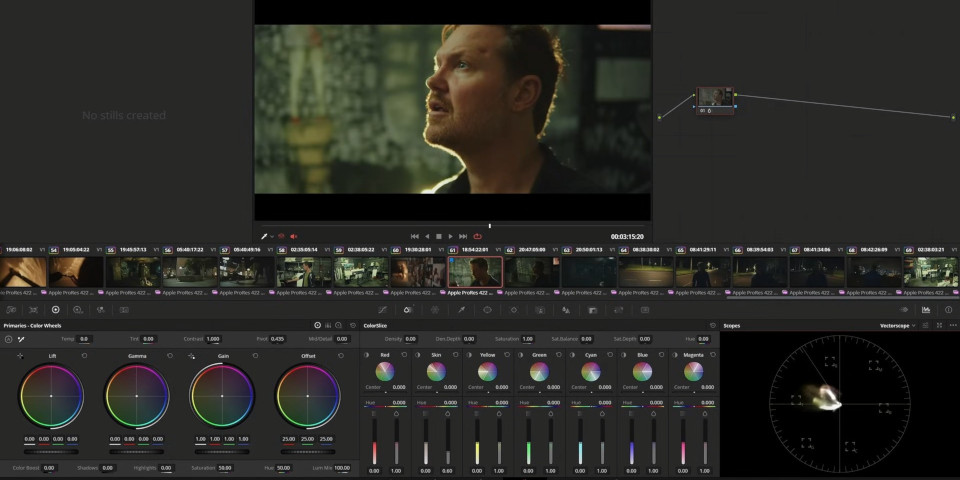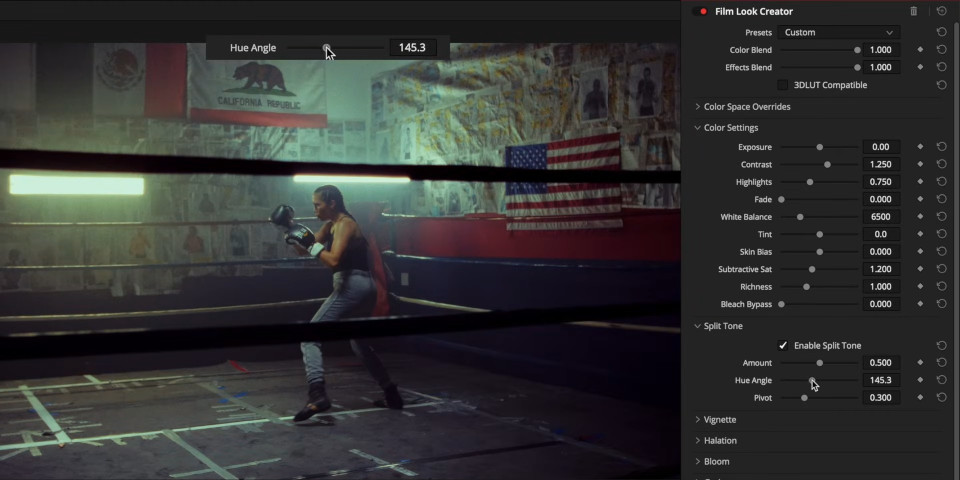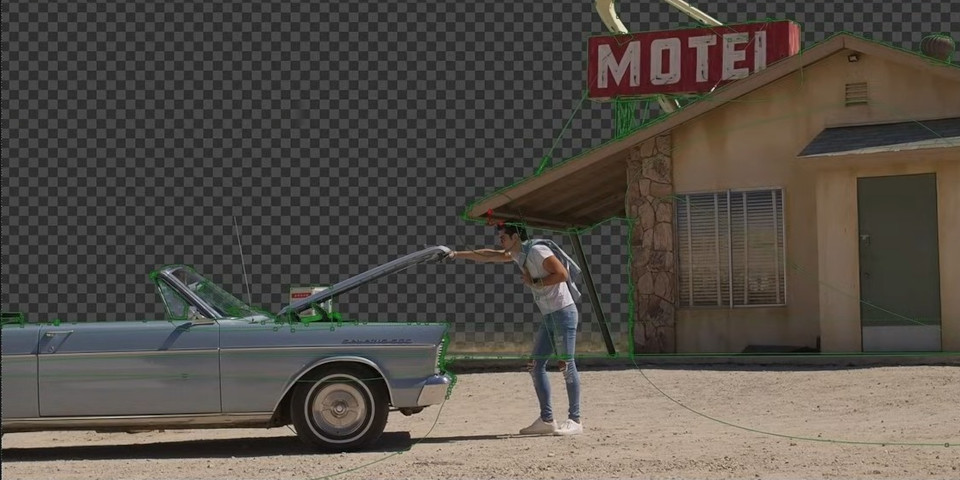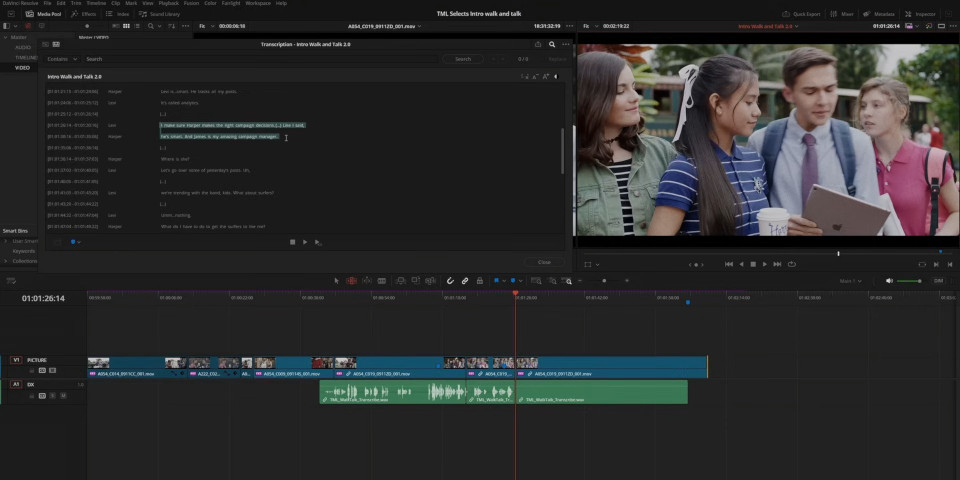Blackmagic Design releases DaVinci Resolve 19.0 in beta
Blackmagic Design’s updates from NAB 2024. Coverage of Da Vinci Resolve 19.0 starts at 34:15.
Blackmagic Design has released new public betas of DaVinci Resolve, its free colour grading, editing and post-production software, and DaVinci Resolve Studio, its $295 commercial edition.
DaVinci Resolve Studio 19.0 adds new features for live broadcast editing, including a complete new replay system, plus new AI-based video editing and audio mixing tools.
Below, we’ve rounded up the key features for colorists and effects artists, including the new ColorSlice grading palette, the AI-powered IntelliTrack tracker and Defocus Background effect, the Film Look Creator, and the new Multi Poly tool for roto work.
(Full disclosure: the beta was actually released a couple of weeks ago, but we didn’t manage to post a story at the time.)
Color page: new ColorSlice grading palette and AI-based IntelliTrack tracker
New features in the Color Page, DaVinci Resolve Studio’s color correction toolset, include ColorSlice, a new six-vector grading palette, shown at the foot of the image above.
It provides controls for the RGB or CMY vectors of an image – there’s actually also a seventh dedicated vector for skin tone – with options to adjust the density, saturation and hue of each.
In the existing RGB Mixer palette, it is now possible to normalize channels as you adjust them.
The update also adds IntelliTrack, a new point tracker powered by Neural Engine, DaVinci Resolve’s machine learning system, available within the Tracker palette on the Color Page, for tracking and selectively color-correcting objects within a shot.
There is a second new Neural Engine-powered feature in the Motion Effects palette: the new UltraNR mode in the spatial noise reduction tool, which automatically adusts the luma and chroma thresholds of footage to remove noise, based on a user-controllable sample area.
Other changes include a new Node Stack system, which lets users break up a node graph into up to four layers to simplify complex grading workflows. The layers are applied sequentially.
Resolve FX: new Film Look Creator and Resolve FX plugins
Also available through the Color Page, DaVinci Resolve Studio’s library of Resolve FX image-processing plugins now includes a new Film Look Creator.
It enables users to apply filmic looks to footage by selecting from presets or adjusting over 60 control parameters, including options for creating split tone effects, and for mimicking the properties of physical film, including halation, grain and flicker.
Other new Resolve FX plugins include Defocus Background, an AI-powered effect that automatically isolates and blurs the background of shot, creating a shallow depth of field.
The existing Face Refinement effect has been updated, and can now track more than one face within a shot. There are also new options for adjusting track points and interpolating keyframes.
Performance improvements include speed boosts of “up to 3x” for the Beauty, Edge Detect and Watercolor effects on Macs, and “up to 2x” on NVIDIA systems.
Fusion: expanded USD support, referenced compositions, and new Multi Poly tool for roto
In the Fusion page, DaVinci Resolve Studio’s integrated compositing toolset, support for USD-based workflows – introduced in DaVinci Resolve 18.5 – has been expanded.
The update adds four new nodes for manipulating textures directly in a USD scene without having to edit the source file: uTexture, uTexture Transform, uShader, uNormal Map.
There is also a new uVolume tool, for importing, shading and rendering volumetric effects like fire and smoke in OpenVDB format.
Workflow improvements include a new Referenced Composition system, which makes it possible to save comps and reuse them across multiple clips or timelines.
Changes made to the source composition are automatically propagated to all of the copies.
For rotoscoping, a new Multi Poly tool (shown above) makes it possible to create multiple roto masks in a single node.
In addition, all of the Shape tools now support motion paths, and there are two new nodes: sText, for adding text to shape-based node trees, and sBSpline, for creating spline shapes.
Performance improvements include a speed boost of “up to 3x” in Magic Mask.
Other toolsets: complete new live replay system and AI-based editing tools
However, the biggest changes in DaVinci Resolve Studio 19.0 are to the editing toolsets, with the Cut page getting new features aimed at live broadcast work.
They include the option to view all of the live camera feeds for a broadcast on a multi-view screen, and to set POI (Point of Interest) markers across all of the feeds in real time.
The markers can then be used to trigger replays from each Point of Interest, with a range of retiming presets for slow-motion playback.
Both the Cut and Edit pages get new AI-based editing tools, including voice isolation, speech-to-text transcription, and text-based timeline editing, similar those in tools like Premiere Pro.
The Fairlight audio toolset also gets AI-based tools, including an audio panning system based on the IntelliTrack tracker, and a dialogue separator for rebalancing speech and ambient sound.
Other new features include support for Ambisonic surround sound, and automatic binaural rendering of Dolby Atmos mixes.
We don’t cover video or audio editing on CG Channel, but you can find a complete list of changes via the links at the foot of the story.
Pricing and system requirements
DaVinci Resolve 19.0 and DaVinci Resolve Studio 19.0 are available in beta for Windows 10+, CentOS 7.3/Rocky Linux 8.6, and macOS 13.0+. The updates are free to existing users.
The base edition is free; the Studio edition, which adds AI features, stereoscopic 3D tools, HDR grading and more Resolve FX filters and Fairlight FX audio plugins, costs $295.
Read an overview of the new features in the DaVinci Resolve Studio 19.0 on the product forum
Read a list of new features in DaVinci Resolve 19.0 and DaVinci Resolve Studio 19.0
Have your say on this story by following CG Channel on Facebook, Instagram and X (formerly Twitter). As well as being able to comment on stories, followers of our social media accounts can see videos we don’t post on the site itself, including making-ofs for the latest VFX movies, animations, games cinematics and motion graphics projects.




